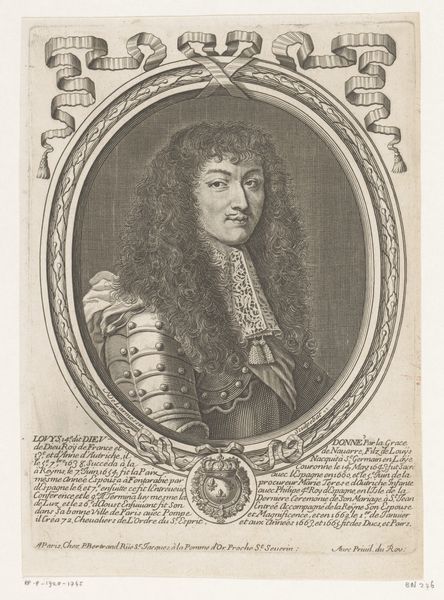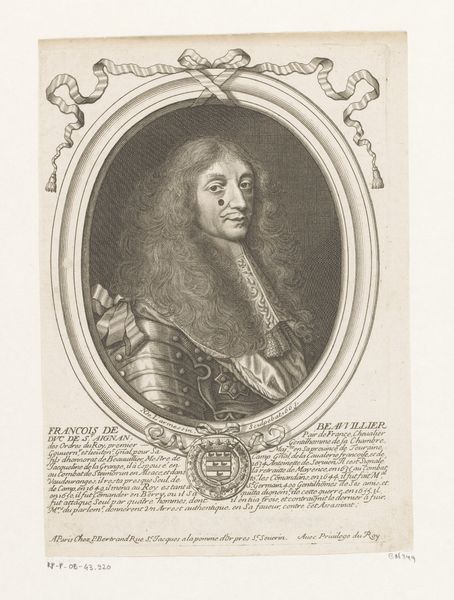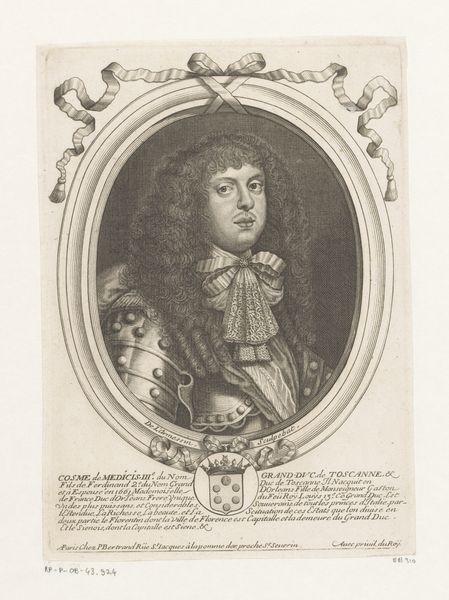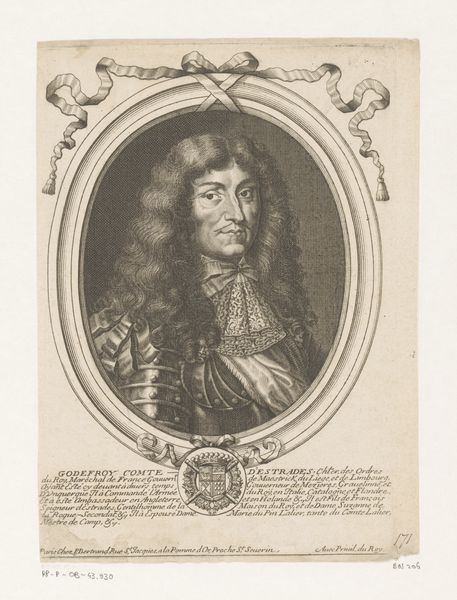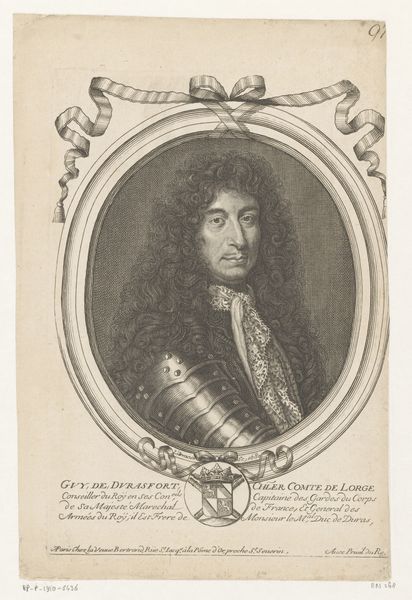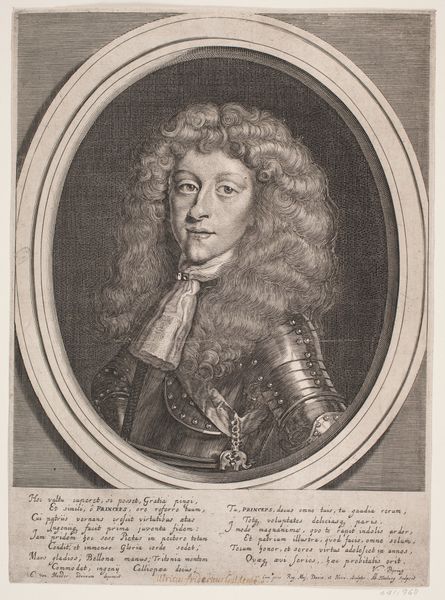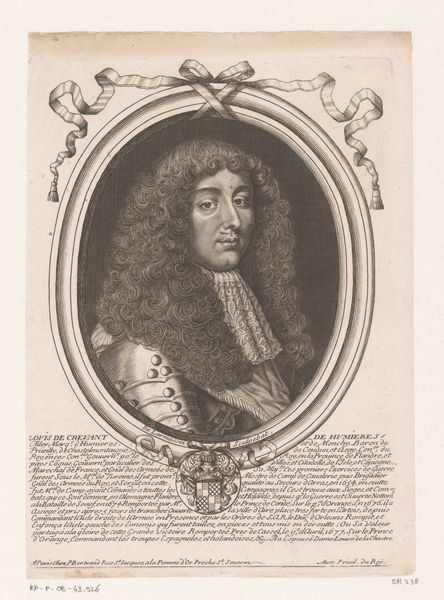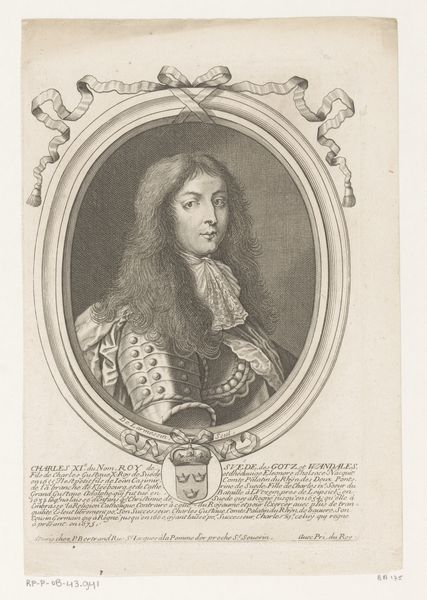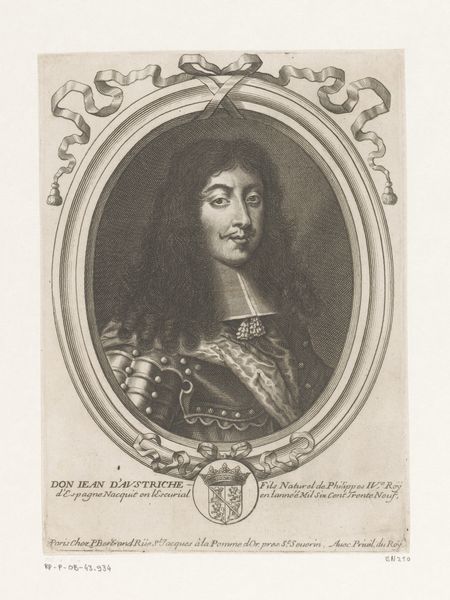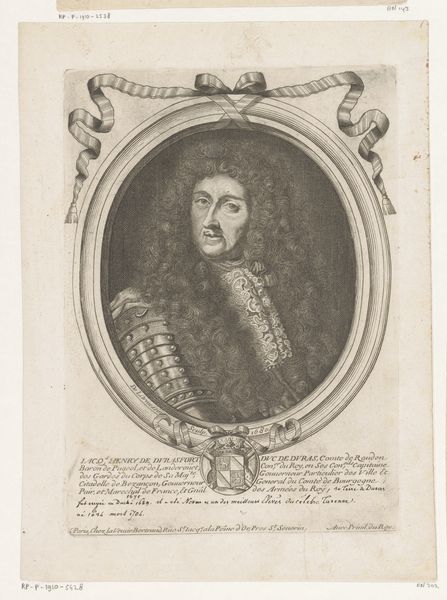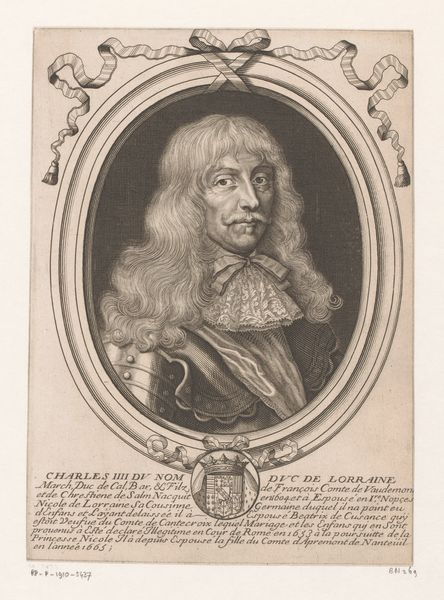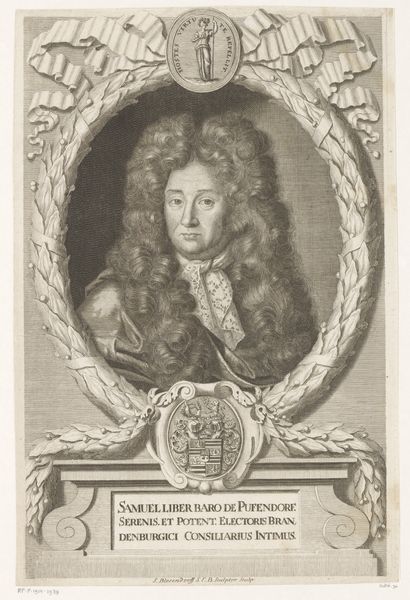
print, engraving
#
baroque
# print
#
old engraving style
#
form
#
traditional style
#
line
#
history-painting
#
engraving
#
realism
Dimensions: height 232 mm, width 170 mm
Copyright: Rijks Museum: Open Domain
Curator: I'm immediately struck by the incredible detail achieved in this engraving, especially the texture of the hair and the meticulous depiction of the armor. It’s masterful. Editor: Indeed. Let’s provide some context. What we're looking at is a print titled "Portret van Friedrich Arnaud hertog van Schomberg" which roughly translates to "Portrait of Friedrich Arnaud, Duke of Schomberg." Nicolas de Larmessin I created it sometime between 1642 and 1678. The artwork is currently held at the Rijksmuseum. Curator: The formal aspects contribute to its grandeur. The oval frame adorned with ribbons, the strategic placement of the subject—everything is carefully constructed. How do you read the materiality and the choices of reproduction medium here? Editor: Well, prints like these served an important function in disseminating information and reinforcing social hierarchies. Engravings allowed for mass production, making portraits accessible to a wider audience. In that time, prints and printed matter functioned to make knowledge of a likeness accessible in far-flung places. Curator: That's a keen observation. The subject's armor indicates a profession of arms, or, as we see in the text at the bottom, military service, while the ornate frame and surrounding text speak to aristocratic lineage and accomplishments. What I am more interested in is the line between labor and commerce... how many workers would have had to work in the means of the creation and dispersal of a piece like this. And whose purposes it would serve to spread this image and the idea it conveys? Editor: You're absolutely right; it presents a curated image. However, focusing on purely formal elements, look at the expert use of line. Notice how variations in thickness and density create a sense of volume and depth. Also the lines evoke a certain type of regal presence appropriate to a man of this position in society. Curator: I think for me, this portrait really reflects not just a specific person but rather more broadly the way printed ephemera allowed states to present and cement images that suit their ends... How this one cog in a grand social-historical process might reflect larger systems of production and governance... Editor: A valid perspective! For me, the interplay between light and shadow, created by the engraver’s hand, offers endless insight into the aesthetics and ideals of the period, and still captivates us centuries later.
Comments
No comments
Be the first to comment and join the conversation on the ultimate creative platform.
